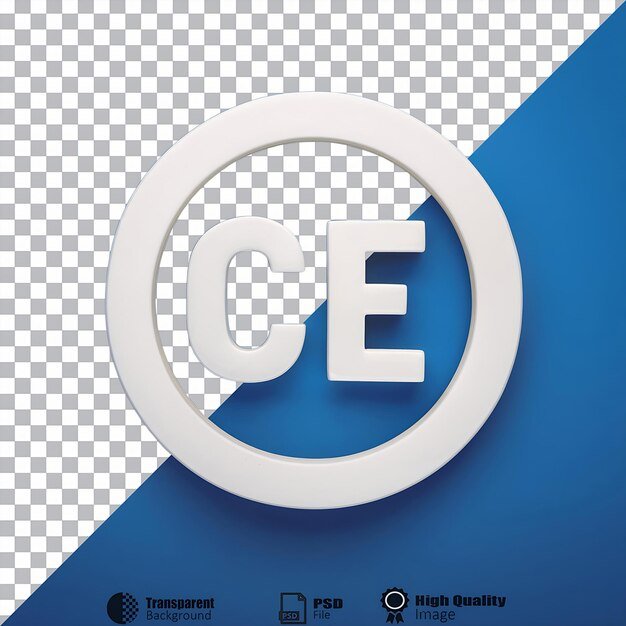Achieve Global Compliance: Your Guide to CE Certification Success
La certification CE fournit un sceau d'approbation pour un produit destiné à la vente sur le marché européen.

I. Introduction
In today’s globally connected marketplace, ensuring that your products meet regulatory standards is essential for success. One of the most recognized certifications, especially in Europe, is the CE mark. The CE (Conformité Européenne) certification symbolizes that a product complies with European Union safety, health, and environmental regulations. Whether you’re a manufacturer or importer, obtaining CE certification is vital to access the European market and build consumer trust.
II. What is CE Certification?
The CE mark is a mandatory certification for certain products sold within the European Economic Area (EEA). It confirms that a product complies with EU regulations related to safety, health, and environmental protection. However, the CE mark is not a symbol of quality; rather, it’s a compliance marker indicating that a product is safe for consumers and meets EU legal requirements.
CE certification applies to a wide range of products, including electronics, medical devices, toys, machinery, and many more. Once CE certified, a product is free to circulate throughout the 27 EU member states without any additional testing or barriers.
III. Why CE Certification is Crucial for Businesses
- Access to the European Market: CE certification serves as your passport to the European market. Any product sold in the EEA that requires CE marking cannot legally be sold without it. Therefore, businesses aiming to expand their reach in Europe must prioritize obtaining CE certification.
- Legal Requirement and Risk Mitigation: Without CE certification, businesses could face legal consequences, such as fines or being prohibited from selling their products in the EU. The CE mark acts as proof that a product adheres to European regulations, minimizing the risk of non-compliance and potential legal issues.
- Consumer Confidence and Trust: Consumers widely recognize the CE mark as a symbol of safety and regulatory compliance. When your products meet EU standards, it strengthens consumer trust, which can lead to increased sales and brand loyalty.
- Competitive Advantage: CE certification gives your business a competitive edge. Buyers and retailers often favor CE-marked products due to their assurance of compliance with European standards. This can make your products more appealing, giving you an advantage over competitors who do not have CE certification.
IV. The CE Certification Process
Obtaining CE certification can seem complex, but breaking it down into clear steps can make the process more manageable. Below is an outline of the key steps involved:
- Identify Applicable EU Regulations: The first step is determining which EU regulations apply to your product. Different product categories are subject to different directives and regulations.
- Ensure Compliance with Health, Safety, and Environmental Requirements: Ensure that your product meets essential health, safety, and environmental requirements. This step may involve product testing, risk assessments, and implementing safety features.
- Product Testing and Documentation: Depending on the product type, you may need to conduct internal testing or work with an accredited laboratory to ensure compliance.
- Prepare a Declaration of Conformity: After confirming that your product meets all regulatory requirements, you must prepare a Declaration of Conformity. This document asserts that your product complies with EU regulations and must be signed by a responsible individual within your organization.
- Affix the CE Mark: Once all requirements are met, you can affix the CE mark to your product. The mark must be visible, legible, and indelible on the product, its packaging, or accompanying documentation, signifying that the product has passed the necessary conformity assessments.
- Post-Certification Maintenance: After obtaining CE certification, it’s important to ensure that your product remains compliant. This may involve regular audits, updating the technical file, and staying informed about any changes in EU regulations.
V. Who Needs CE Certification?
CE certification is essential for various products within the EEA, but not all products require it. The need for certification ce depends on the product category, its intended use, and the regulations it falls under. Here’s a breakdown of who needs CE certification:
- Manufacturers: Manufacturers producing products for sale in the EEA must ensure that their products meet the necessary requirements and bear the CE mark. This applies to both EEA-based companies and international manufacturers wishing to sell their products in Europe.
- Importers and Distributors: Importers and distributors must ensure that non-EEA products entering the European market bear the correct CE mark. They must also verify that the manufacturer followed the appropriate processes, ensuring that the product meets EU regulations.
- Products Requiring CE Certification: CE certification applies to specific product categories, such as:
- Electronics and Electrical Equipment
- Medical Devices and In Vitro Diagnostic Devices
- Personal Protective Equipment (PPE)
- Toys
- Machinery and Lifting Equipment
- Construction Materials
If your product falls within one of these categories, obtaining CE certification is a legal requirement for entering the European market.
VI. Key Benefits of CE Certification
Achieving CE certification provides several benefits to businesses, including:
- Access to the European Market: CE certification allows your products to be sold across the European Economic Area (EEA), opening up access to 27 EU member states and other countries that recognize the CE mark.
- Legal Compliance and Risk Mitigation: CE certification ensures compliance with EU regulations, reducing the risk of legal penalties or customs issues.
- Enhanced Consumer Trust: The CE mark assures consumers that the product meets safety and regulatory standards, improving brand trust and consumer confidence.
- Increased Competitive Advantag: CE certification differentiates your products from competitors, making them more appealing to buyers, retailers, and distributors.
- Improved Product Quality and Safety: The certification process encourages rigorous testing and quality control, ensuring that products are safe and reliable.
- Global Recognition: The CE mark is recognized internationally, which can help expand your business beyond the European market.
VII. Challenges in Obtaining CE Certification
While CE certification offers numerous benefits, there are challenges to consider:
- Understanding Complex Regulations: Navigating EU regulations can be complicated, and businesses often need expert help to understand the applicable rules and ensure compliance.
- Costs of Compliance: The process may involve significant costs, including product testing, certification body fees, and the administrative costs of maintaining compliance.
- Documentation and Record-Keeping: Proper documentation is critical. Keeping detailed technical files, risk assessments, and product test reports can be time-consuming and require an organized system.
- Ongoing Compliance: CE certification isn’t a one-time process. Regular audits and updates are necessary to maintain compliance with evolving regulations.
- Dealing with Bureaucracy: The certification process can be bureaucratic, requiring businesses to navigate complex paperwork and communication with certifying bodies.
VIII. Conclusion
CE certification is essential for businesses looking to enter the European market. It ensures that your products comply with EU safety, health, and environmental standards, while also boosting consumer trust and providing a competitive edge. Although the process can be complex and demanding, the benefits of CE certification far outweigh the challenges. By following the steps and maintaining compliance, businesses can enjoy global recognition and increased market access.
What's Your Reaction?


















